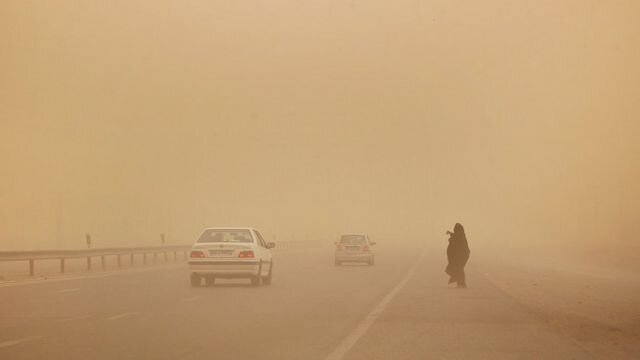Tehran, Ashgabat to start SDS control project

TEHRAN – Iran and Turkmenistan will launch a joint project to manage and control sand and dust storms originating from the Karakum Desert in Turkmenistan.
Iran’s Department of Environment Chief Ali Salajeqeh said the decision was made during a meeting with Turkmenistan’s Foreign Minister Rasit Meredov, IRIB reported.
The two officials met on the sidelines of an international conference titled "Partnership for Food Security under Climate Change" which was held in collaboration with the United Nations Food and Agriculture Organization (FAO) in Ashgabat on March 9-10.
Expert teams from both sides will investigate the origin of the dust in northeast Iran that affects the two countries.
Salajeqeh also said that regarding the issue of waste management and the transfer of technologies related to this field, good decisions were made by the two countries.
“Dredging of the rivers leading to the Caspian Sea, as well as the issue of protecting border areas and implementing joint plans in the field of wildlife conservation were other issues discussed by the two sides.”
Addressing the international conference in Ashgabat, Salajeqeh called for boosting multilateral cooperation in the region to tackle environmental challenges and ensure food security.
“The impact of climate change has become so obvious and severe that we must react actively, effectively, efficiently, and quickly.”
Environmental problems are not limited to the political arena, he said, adding that supporting and strengthening regional and multilateral cooperation to overcome common challenges is of vital importance.
“We are determined to take more effective measures to protect the environment and maintain the country's food security, and we know very well that to achieve this goal, we must cooperate with other countries, especially our neighboring countries.
The world needs to make serious decisions at the right time to prevent the occurrence of disasters related to malnutrition and poverty that will affect the achievement of sustainable development goals and slow down the process of achieving them.”
The SDS phenomenon has been plaguing the country for several years and has caused problems in many provinces. According to experts, natural and human factors are involved in the occurrence and severity of this phenomenon which is mainly caused by excessive consumption of water and drying up reservoirs.
In August 2022, Salajeqeh said to deal with sand and dust storms, positive measures have been taken inside the country.
A ten-year plan has been prepared to curb internal sources of sand and dust storms, he added.
Based on the plan, the relevant institutions are performing their tasks to curb SDS effects, he stated, adding that the Natural Resources and Watershed Management Organization should have the first role in the plan, and the Planning and Budget Organization should also stand by the work.
The internal dust sources are estimated at 34.6 million hectares, generating an average amount of 4.22 million tons of dust per year, about 1.460 million hectares are dried wetlands.
In the past four years, about €370 million has been spent by the National Development Fund to combat SDSs, which had good results, but it seems that the annual credit is declining as conditions improve.
Letizia Rossano, the director of the Asian and Pacific Centre for the Development of Disaster Information Management (APDIM), said in June that Iran is really at forefront of understanding the problem of sand and dust storms as well as dealing with it.
More than 80 percent of the entire populations of Turkmenistan, Pakistan, Uzbekistan, Tajikistan, and the Islamic Republic of Iran are exposed to medium and high levels of poor air quality due to sand and dust storms," she noted.
MG
